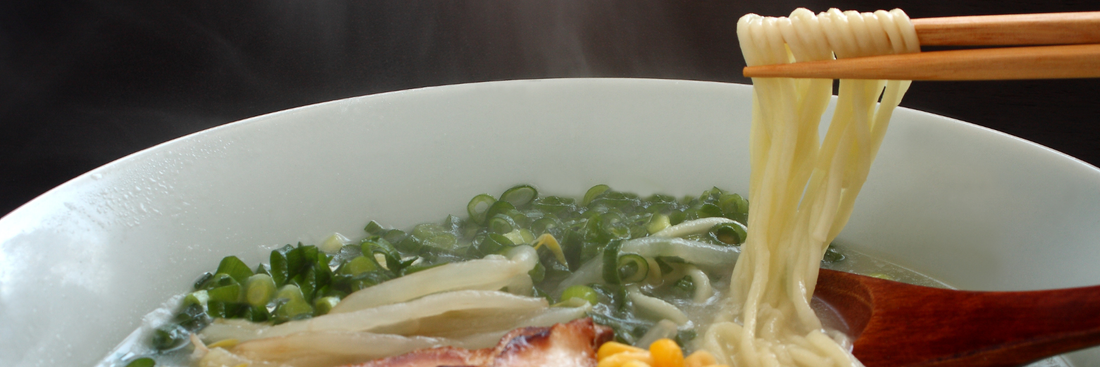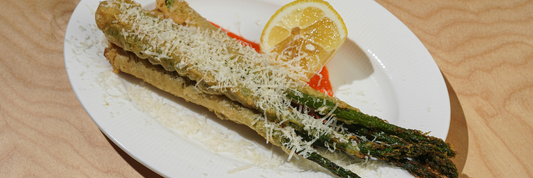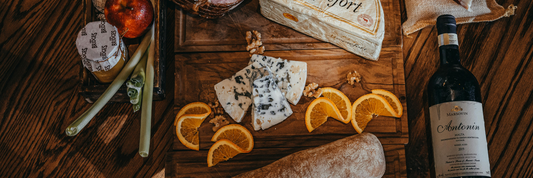In a bustling ramen or sushi restaurant, precision is everything from the texture of the noodles to the freshness of the fish. Yet behind the scenes, many kitchens face an invisible challenge: food waste.
Leftover noodles that lose texture, imperfect sushi rolls that can’t be served, or ingredients discarded at the end of the day all contribute to both environmental and financial loss.
For restaurants that value craftsmanship and sustainability, reducing waste is not only an ethical choice but also a smart business strategy. At Kimecopak, we believe every small change from storage methods to packaging choices can help F&B businesses run more efficiently while protecting the planet.
-
The Role of Sushi Masters in Building a Restaurant’s Brand Identity
- Vegetarian & Vegan Ramen: A Gateway to New Customer Segments
- Profit Margin Analysis in the Sushi Business – Which Items Generate the Highest Returns?
Understanding Why Food Waste Happens in Ramen & Sushi Restaurants

Japanese cuisine values balance and freshness, but this also means higher waste potential. Here are the most common reasons:
1. Over-preparation and unpredictable demand
Ramen broth, sushi rice, and toppings are often made in bulk to ensure consistency. However, unpredictable customer traffic can lead to excess food that can’t be reused safely.
2. Strict freshness standards
Sushi-grade fish and fresh noodles have short shelf lives. Once they pass the ideal freshness window, they can’t be served even if still edible.
3. Portion size inconsistency
Slight variations in sushi roll size or ramen toppings can lead to uneven inventory usage, creating waste over time.
4. Poor storage or labeling
Ingredients stored incorrectly or without clear labeling are easily forgotten or spoiled before use.
Practical Solutions to Reduce Food Waste

1. Smart Inventory and Demand Forecasting
Implementing digital tools to track ingredient usage and predict peak hours helps chefs prepare more precisely.
Tips:
- Use software to analyze weekly sales data.
- Set par levels for perishable items.
- Rotate stock using the “First In, First Out” method.
2. Optimize Menu Design
Simplify the menu to focus on best-selling dishes and shared ingredients. This minimizes leftovers and streamlines operations.
Example:
If one type of noodle or sauce can be used across multiple dishes, the restaurant can purchase in bulk without increasing waste.
3. Practice Creative Reuse and Repurposing
Leftover ingredients don’t always have to be discarded.
- Turn day-old rice into staff meals or fried rice specials.
- Use vegetable trimmings for stock or garnish.
- Offer half-size ramen portions for customers with smaller appetites.
4. Improve Storage and Temperature Control
Proper refrigeration and airtight packaging extend ingredient life. Label containers with prep dates and storage instructions.
Pro Tip: Eco-friendly packaging from Kimecopak keeps ingredients fresh while reducing plastic use perfect for restaurants aiming for both quality and sustainability.
5. Partner with Food Donation Programs
Instead of throwing away unsold but safe food, restaurants can collaborate with local food banks or community kitchens to donate meals.
6. Train Staff on Sustainability Practices
Food waste reduction starts with awareness. Conduct workshops to teach chefs and servers about portion control, accurate ordering, and waste sorting.
Sustainable Packaging Solutions for Ramen & Sushi Restaurants

Packaging plays a crucial role in managing leftovers and takeaway orders. By choosing eco-friendly materials, restaurants can reduce their environmental footprint and maintain food quality.
Kimecopak’s Recommended Solutions:
| Packaging Type | Ideal For | Sustainable Benefit |
|---|---|---|
| Paper ramen bowls | Takeout noodle dishes | 100% compostable, grease-resistant |
| Kraft sushi boxes | Sushi rolls & combo meals | Made from renewable materials |
| Bagasse containers | Bento or rice dishes | Biodegradable and sturdy |
| Compostable lids & utensils | All F&B packaging | Reduce single-use plastic waste |
Kimecopak’s sustainable packaging not only supports waste reduction but also enhances your restaurant’s brand image as a responsible, eco-conscious business.
Benefits of Reducing Food Waste in Japanese Restaurants

Reducing waste isn’t just good for the planet it’s good for business:
- Lower operational costs by minimizing ingredient loss.
- Better inventory management and smoother kitchen workflow.
- Enhanced brand reputation among eco-conscious diners.
- Compliance with green standards for restaurant sustainability certifications.
Action Plan – How to Get Started
Here’s a simple checklist to begin implementing waste-reduction strategies:
- Conduct a food waste audit for one week.
- Identify top wasted ingredients.
- Streamline menu items that cause excess waste.
- Switch to sustainable packaging with Kimecopak.
- Educate your staff and customers about your sustainability mission.
Conclusion
Reducing food waste in ramen and sushi restaurants isn’t about perfection it’s about progress. Every thoughtful decision, from portion control to packaging, makes a difference.
With eco-friendly packaging and smart management practices, restaurants can honor the art of Japanese cuisine while contributing to a greener future.
FAQ Section
Q1: How can ramen shops reduce broth waste?
Use smaller batch cooking and offer “refill” options instead of preparing large quantities in advance.
Q2: Can sushi restaurants donate leftover fish or rice?
Yes, if local regulations allow, donate within safe time limits through verified food redistribution networks.
Q3: What’s the best packaging for ramen delivery?
Compostable paper ramen bowls with secure lids help retain heat while reducing plastic waste — available from Kimecopak.
Q4: How does eco-friendly packaging help with food waste?
It keeps food fresh longer, reduces spoilage, and encourages customers to store leftovers responsibly.
Q5: What are small steps restaurants can take immediately?
Start by auditing waste, adjusting portion sizes, and switching to sustainable packaging solutions.
-
LEARN MORE about How "Subscribe for a Happy Life" will benefits your business HERE!
-
LEARN MORE about Kim Vu, sharing on the challenges she faced as a former restaurant owner, and how she overcame them to create KimEcopak HERE!




